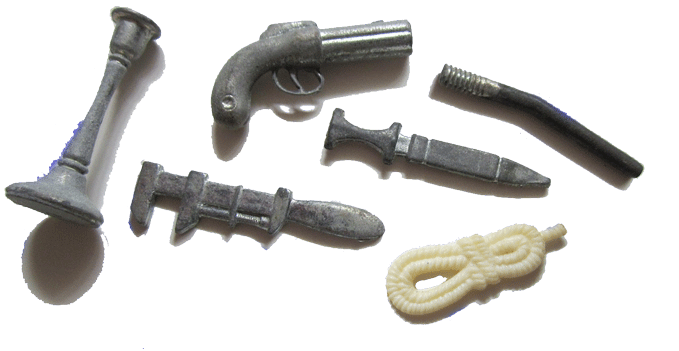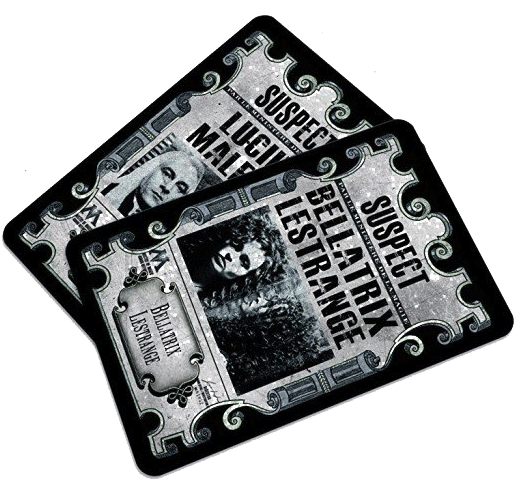
Apparently, Cluedo was devised about 1943, according to Cluedopedia. The fact that it’s lasted so long in so many countries and has morphed multiple times is a mark of its capacity to excite, challenge, and even to annoy.
In the original house (and in the ‘classic’ version, that’s still where the action takes place) the characters’ names reflected the colours of their markers: which players move around the house. The six of them included Professor Plum, Colonel Mustard, and Miss Scarlett. Each player ‘is’ one of these characters. They’re shown on the box above – several looking a bit younger than they looked when they were younger: if you follow me. 😃
Within the house, some sad soul was murdered. It’s not the players’ job to find out who was killed. Rather, using the deductive skills of a detective, they seek to identify who was the killer, and in which room the hideous crime took place, and using what instrument.
So, there are three crucial elements of information that must be gathered together … what are the clues?
Before play begins, three cards are put secretly into an envelope … one character, one weapon, and one room. These three elements are what the detectives are seeking to know.
As well as ‘being’ one of the characters, each player holds some cards: a mixture of the three elements.

Information gathering is done by the judicious making of suggestions. When a player arrives within a room, they are permitted to suggest that a certain somebody, using a certain something, did the deed in that room. The suggesting player will then receive secret but limited feedback from the other players, who’ll reveal information on their cards, if they have it.
The suggester may secretly receive clue confirmation of what they’ve suggested, or disconfirmation, like
… “yes, here’s a picture of what you’re suggesting”
… or “no, I haven’t got a picture of what you’re suggesting”.
Gradually they will accrue information. They will have things that they know were the case, and things that were not. Eventually, someone will bravely step forward and make an accusation – they’ll say who dunnit, where they dunnit, and with what they dunnit. They’re saying “these are the three pieces of information hidden in that envelope”.
If they’re correct, they win! If they’re wrong, they can no longer win, but they hold on to their cards so that they can provide feedback when others make suggestions. No, they cannot go and make the sandwiches! They’re not in for a win, but they’re not out for the count.

Think about it, 1949 was more than seventy years ago, and things do change! Whilst the core process and logic of the game is much the same, it’s been configured to reflect such themes as Sherlock Holmes, the Big Bang, and Game of Thrones … and more.
Clearly, Cluedo isn’t going to go away anytime soon.
Theme-variety makes it appealing across a wider range.
- minimal setting up
- replayable
- a fairly gentle ‘thinking’ game
- deductive thinking develops
- as does the ability to use ‘negative’ evidence
- much forehead scratching
- there may be minor variations between different themes
► Oh, the choices of themes these days!
